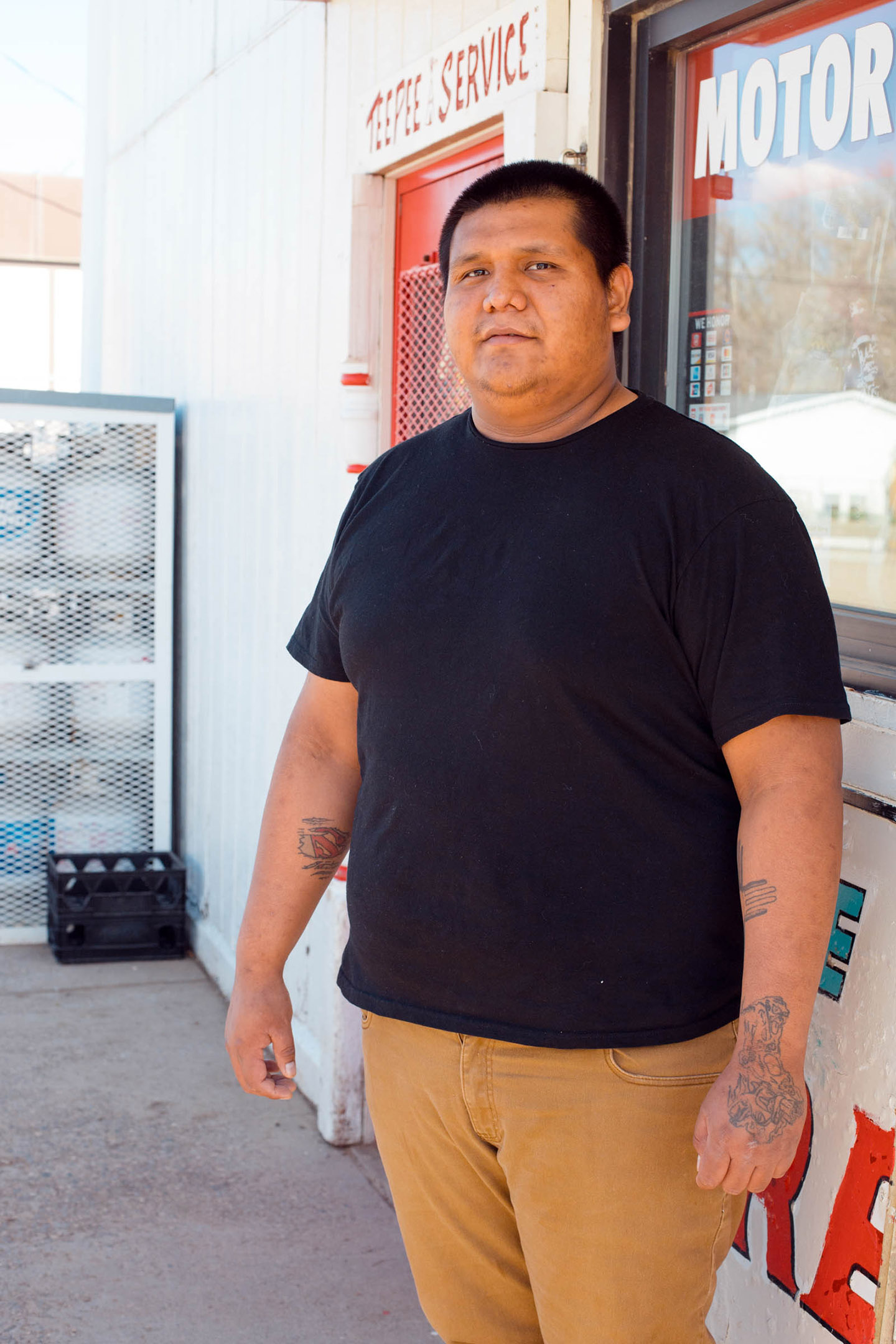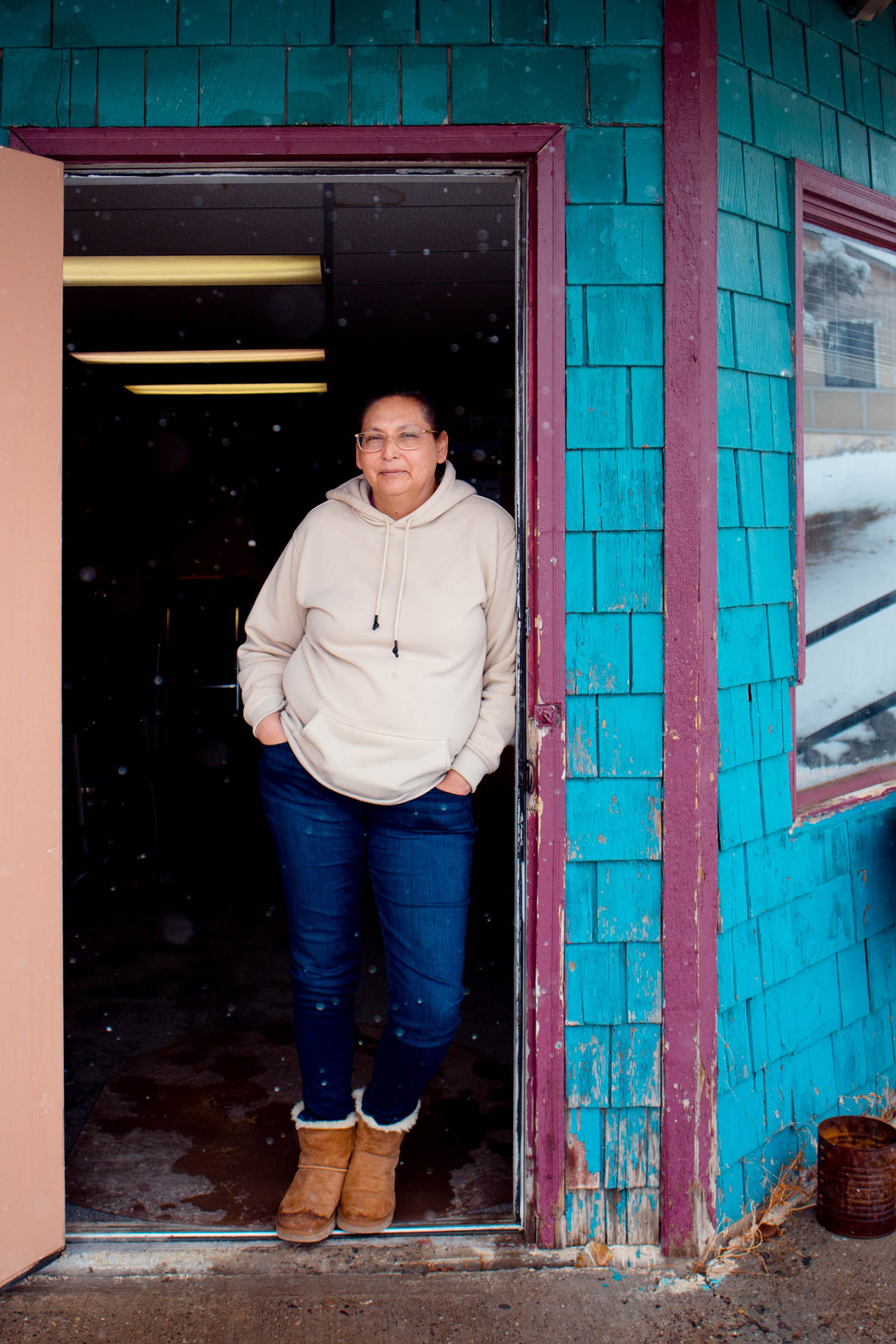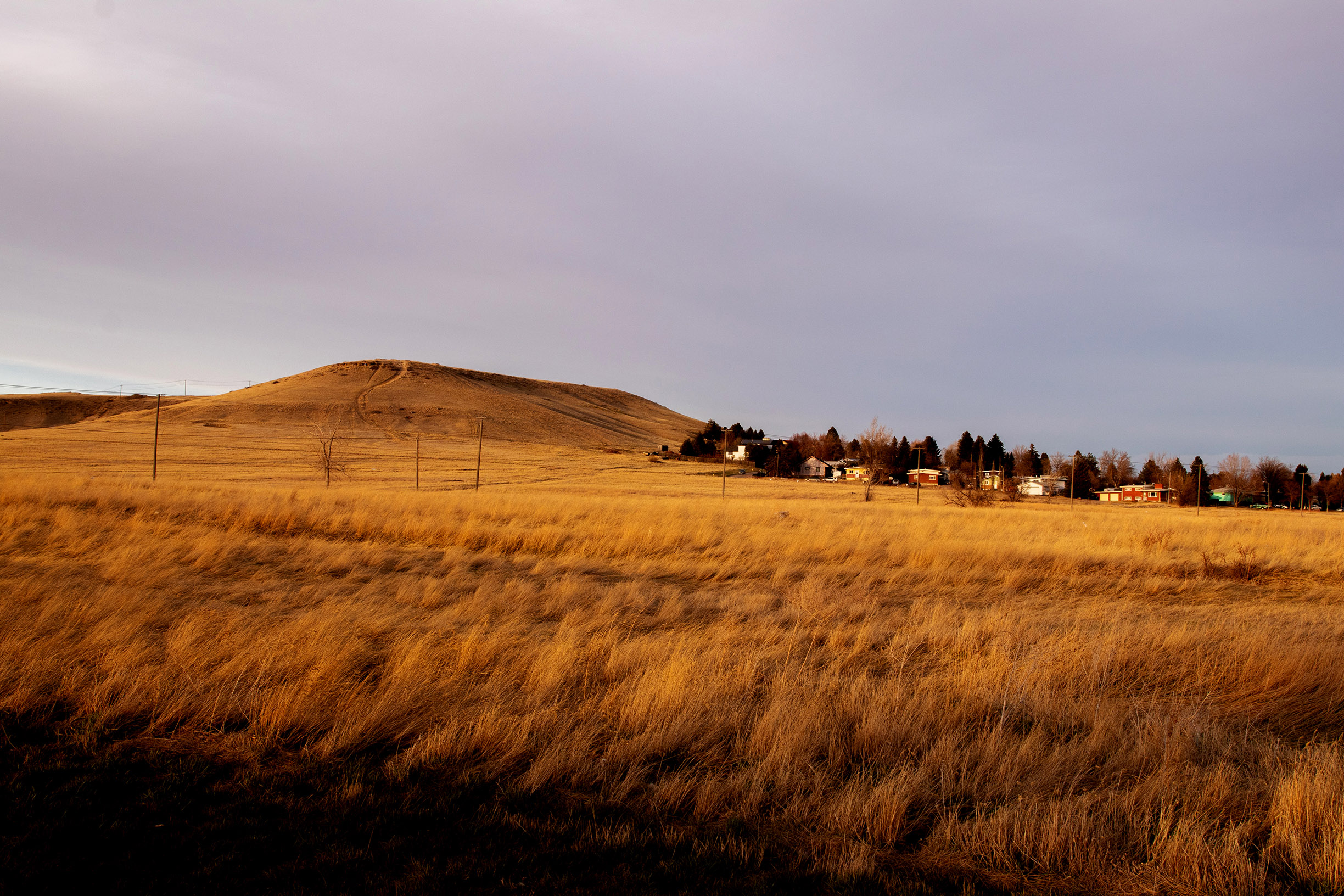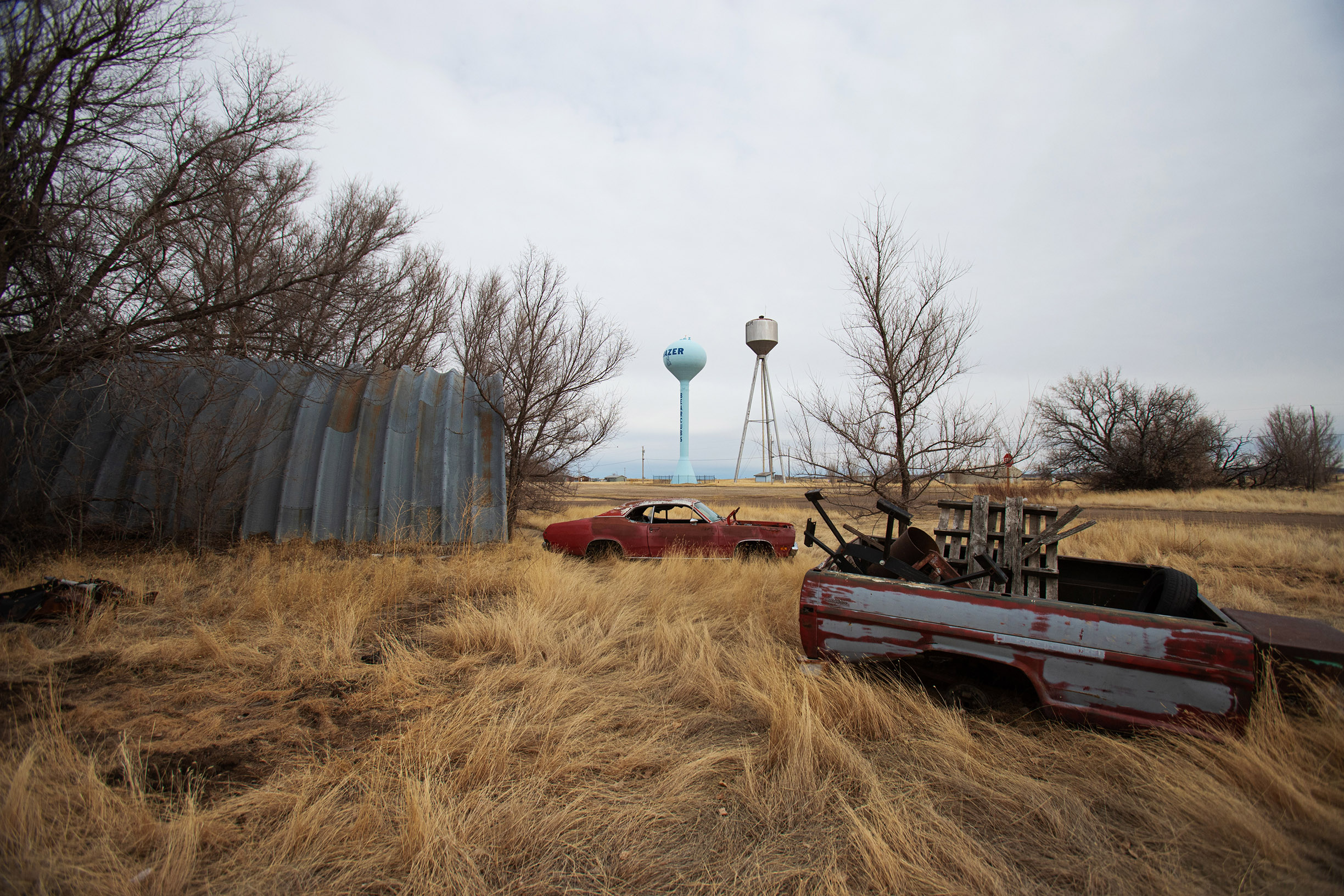
Insecure
The rise and fall of the Crow Nation Police Department
Written by Nikki Zambon, Photos by Olivia Swant-Johnson
In November, 2020, Braven Glenn, a 17-year-old honor student and basketball player, was killed on Interstate 90 during a high speed chase with the newly formed Crow Nation Police Department. His vehicle reportedly went off the road and collided with an oncoming train, although details are hard to find.
His family has tried repeatedly to access his death and toxicology reports, but did not receive them until four months after his death. The Bureau of Indian Affairs told his mother, Blossom Old Bull, the incident was under investigation. When the reports came back, they showed that he had died from blunt force trauma. The toxicology report showed there was alcohol and marijuana in his system.
The Crow Nation Police Department was only five months old when its officers chased down Glenn.
“How are people you’re supposed to trust to protect you in this community the same as the people that could kill you for speeding?” said Scott Old Bull, Glenn’s brother.
Further complicating the search for answers, the Crow Nation Police Department was closed shortly after Glenn’s death. There were many questions surrounding what happened.
Enlarge

The family is still waiting for an official police report of the incident more than five months later. They still have no idea what happened the night Glenn died and who should be held responsible.
“The tribal police did not help this community,” Blossom Old Bull said. “It caused more damage than good. We feel like they are hiding something but we just want justice for our baby boy because his senseless death didn’t have to happen.”
The BIA has refused several times to comment on the subject.
Here is what we know: In June, the Crow tribe, which had been angling for years to create its own tribal police force and take over its law enforcement from federal control, used a chunk of the $27 million federal CARES Act money to speed up the process. Then, in late November, the Crow Nation Police shut down completely, with little notice as to why, although talk among the community said the department was under multiple investigations.
Here is what we don’t know: How much CARES Act money was used to create the force including purchasing about 30 vehicles, the building the police department operated out of, the two unused shipping containers that were meant to detain people, and the officers’ salaries. We don’t know who is conducting the investigation into the lawfulness of using CARES Act money to create a police force. We don’t know if the Crow tribe even had the jurisdiction to erect a tribal police force.
However, Crow residents are confused and angry that a community resource as integral as the police has been made into a mess.
***
The Crow reservation is located in southeastern Montana, bordered by Wyoming and the Northern Cheyenne reservation. And it’s big. It covers a span of about 2.3 million acres, or approximately 3,600 square miles, making it the largest reservation in Montana and sixth largest in the country. But despite the expansive land, there are only around 7,900 individuals currently residing on it.
Enlarge

When COVID-19 hit the reservation in April, Alvin “AJ” Not Afraid Jr., the then-tribal chairman, put approximately $4 million in CARES Act funds towards a community project called Incident Command.
The project, which based its operations in the Apsáalooke Casino in Crow Agency, consisted of tribal members acting as a COVID-19 response team, performing community duties from delivering food, water and sanitation supplies to pulling out vehicles stuck in the reservation’s muddy hills.
Across the road from Incident Command sat the Little Bighorn Casino. It closed up years ago, the glass doors shattered, chairs stacked in front to prevent illegal entrances.
Stationed in its parking lot were six tribal police vehicles. At least another 20 had been taken elsewhere, under investigation, according to the new administration.
The vehicles in the casino parking lot were lined up, side-by-side. They were kept under a bright spotlight for months. Their “Crow Nation Police” emblems were torn off because the new administration feared people would think the police station was still up and running.
There were three used Dodge Chargers and three brand new, white 2020 Chevy Tahoes. One had a tumbleweed wedged underneath the front grill. Another’s tire was flat.
The insides were fully-equipped with radios, microphones, steel barriers and hard, plastic bucket seats for the arrestees. In the trunk was safety hazard equipment and a lockcase, which contained computer tablets.
The vehicles were purchased by the former administration under Chairman Not Afraid, using CARES Act money to erect a police force in hopes of mitigating the negative and possibly violent side effects of the pandemic.
“In the realm of COVID, people were becoming unsteady,” Not Afraid said. “If you tested positive, people treated you like a leper. Law enforcement had to get involved because people were getting threatened.”
Karl Little Owl, who worked as chief operating officer under Not Afraid, was concerned that the reservation would see a spike in crime.
“Our challenge as a tribe is that there is no public safety anywhere,” Little Owl said. “We have missing and murdered people, meth and now a health emergency.”
He was concerned about how quarantining would affect community members.
“During the stay at home order, we were seeing more cases of child abuse, domestic abuse and child neglect and thought there was a correlation,” Little Owl said.
Prior to the formation of the tribal police, the BIA managed law enforcement on the reservation.
In Montana, the BIA regional office is located in Billings, an hour’s drive from Crow Agency.
But on the Crow reservation itself, there are only between one and four BIA officers operating out of two small mobile trailers. That’s four individuals guarding a reservation roughly the size of Connecticut. For comparison, Connecticut has 6,628 police officers patrolling the state.
The BIA is a federal agency founded in 1824, formerly known as the Office of Indian Affairs, and has had a contentious history with Native Americans.
Tribes were forced onto reservations and by the 1880s, the BIA became entirely in charge of operating schools, justice systems and land leasing.
Over the decades, more and more tribes have invoked self-determination to take over programs internally, and in Montana, four tribes have taken over law enforcement. Crow hadn’t had its own police force in more than 30 years.
Because of its long history in Indian Country, the BIA police have lost the trust of many Native Americans who say the federal agency has little care for protecting them from crime on the reservation.
Enlarge

Scott Old Bull, who worked at the local gas station called Teepee Service on Crow Agency, said he wouldn’t serve BIA officers when they came into the store.
“I’m against the BIA. They are not doing anything,” Old Bull said. “There was a shooting here last week and it took three hours for the BIA officers to respond. Their office is just right around the corner.”
With such a large swath of land and so few officers safeguarding it, crime on the Crow reservation was commonplace.
According to the most recent report released by the Department of Justice in 2017, there were 179 reported property crimes, four murders, 102 cases of larceny-theft and 51 motor vehicle thefts. Crow had the highest numbers in these categories compared to other tribes in the state. Crow country also had the highest rates of missing persons in the state.
According to the Department of Justice, the number of missing persons on Crow was only going up. From 2017 to 2019, the number increased from 26 to 37.
Former Chairman Not Afraid sought to create and implement tribally run law enforcement through a federal contract, an order established under the Indian Self-Determination and Education Assistance Act.
A successful transfer of power requires the federal government to supply the tribe with whatever money it would have spent on the federal program, function, service or activity it initially oversaw.
Not Afraid’s administration had submitted at least two contract applications and both had been denied.
In 2018, Not Afraid sent a letter to Charles Addington, director of the BIA, declaring a state of emergency on the reservation in response to “yet another public safety incident” after a gun was shot during the theft of a vehicle in Lodge Grass.
Many on the reservation pointed to the major highway, I-90, which runs through the reservation, as the cause for the drugs and missing persons.
“They need to get drugs off the street,” Old Bull said. “Interstate 90 is easy to access. Anything could get in here and be gone just like that. The police can’t recognize every car that passes through.”
Not Afraid’s wife, Deneen Not Afraid, said in an email that her husband had supported her decision to start a task force that focused on missing and murdered indigenous persons because she was not satisfied with the response of the BIA.
“Tribal members were going missing and the Crow people could not rely on the BIA to provide effective police services,” she wrote. Deneen Not Afraid said the tribe had numerous meetings with the BIA, the Montana U.S. Attorney’s Office, and Big Horn County Commissioners to no avail. “It became clear that the Crow tribe could not rely on any outside government entity to provide justice and law enforcement for the Crow people.”
Even without the approval of the federal application to take over law enforcement, Not Afraid’s administration met with newly hired consultants and “health partners” who told them that addressing public safety should be the number one concern during the pandemic. The administration was given the green light to form a tribal police force.
Along with the vehicles, the administration hired at least 15 officers. They bought a former museum in Garryowen, a town near Crow Agency, and transformed it into the newly appointed tribal police force’s headquarters. “Mobile jails,” or shipping containers equipped with electrical wiring and small holding cells, were purchased to act as temporary detainment units. They were never used.
***
Dawn Plenty Hoops, the tribe’s new procurement director, said people were upset with the way CARES Act funds were distributed.
She would have liked to see the money spent on larger stimulus checks and Incident Command operations. The tribe disbursed a total of $800 to adults only. She wasn’t fond of what she and others had begun calling the “COVID cops.”
“They were just in the way. They didn’t know tribal law,” she said.
The Crow Nation Police force was made up of many non-native personnel.
According to Terrill Bracken, who was hired as the police chief for the tribal force, the idea was to pair trained officers, who were not from the reservation, with tribal members who knew the law, in hopes of building a balanced and unbiased force.
“No one wants to pull over their aunty and give them a ticket,” Bracken said.
Bracken, a non-tribal member who resided outside of the reservation, said he was skeptical when Not Afraid called him in 2018 about starting a police force.
Bracken was an experienced law enforcement officer with 13 years under his belt, so he was wary of the tales of corrupt governments and serious violence on the Crow reservation. But when he met with Not Afraid and discussed their shared policing philosophy and how badly the reservation needed security, Bracken jumped on board.
His job as a mixed martial arts trainer and fight organizer was put on hold while he worked with Not Afraid’s administration. They tried for two-and-a-half years to get a law enforcement department up and running, applying for private and federal funding and submitting the federal applications.
Then COVID-19 hit. And just a month after the federal CARES funds were received in May, the Crow Nation Police force was in full swing. It is unclear, although unlikely, that the BIA had approved of the tribe’s law enforcement plan, as required in the self-determination process. Regardless, Bracken was fired a month later.
While grocery shopping with his mother, Bracken received a phone call from William Falls Down, who was the newly appointed acting public safety director, informing him of his termination.
“I put my blood, sweat and tears into getting this thing off the ground,” Bracken said.
He suspected the termination had to do with differing views he and Falls Down had on how the police force should function. Politics, he said.
“It was heartbreaking. It affected my family and we went into a financial tailspin,” Bracken said.
***
The Crow Nation Police department was shut down in November, just before Not Afraid was voted out of his chairman post and replaced with Frank Whiteclay.
The police department was boarded up. The shipping containers sat, untouched, with the blue packing tarp waving in the wind.
The change in administration was a difficult shift for the community.
There is always some level of confusion when a tribal administration makes a shift in leadership. In this instance, that seemed even more so, said Jacob Stops, who was hired in the new administration as Incident Command information officer and grants coordinator.
Stops had spent much of his time trying to track down where, exactly, the $27 million in CARES Act funds went under the former administration.
There were few spending records and the former administration hired accountants from off the reservation, so Stops didn’t get very far. And when it came to getting people to talk, it was a real challenge.
“We’re all related around here. You have to understand, the walls have eyes and ears,” Stops said.
When Frank Whiteclay was elected at the beginning of December, the police force had already been disbanded for a few weeks.
Whiteclay and Not Afraid stood on different political platforms; Whiteclay interested in investing in clean energy, Not Afraid trying to reinvigorate the reservation’s coal resources. Whiteclay was interested in showing face on the reservation and employing tribal members, while Not Afraid worked from home and hired non-tribal members as his right-hand people.
But both of these men agreed on the need for a greater public safety presence. They both felt four BIA officers on the largest reservation in Montana wasn’t enough. How to gain that presence was where their viewpoints split.
According to Whiteclay, using the CARES Act funds to establish a tribal police force did not fall within the Department of the Treasury’s CARES Act spending guidelines.
Whiteclay said the CARES funds were supposed to go into a separate account and be properly managed, but as far as he could tell, that never happened. The former administration bought items for the new police department — without approval from the tribe’s legislature — and were simply “playing cops.”
“We’re still trying to figure out exactly where that money went,” he said.
Tiffany Figuero, an auditor working specifically with CARES Act questions within the Department of Treasury’s Office of Inspector General, said the spending guidelines weren’t black and white, intentionally so.
“These guidelines are broad because different tribes have different needs. For example, some tribes need clean, running water, while others need housing for the homeless,” Figuero said.
She said there are only three rules that are hard and fast when it comes to CARES Act spending: The money was to be spent by the end of 2020, which was later extended to December 2021. Tribes must be upfront and transparent with their purchases. Lastly, the money had to be used in response to, or in mitigation of, the pandemic.
Figuero said public safety has been one of the main uses for CARES Act funds. But when it came to erecting an entire police force from scratch with the money, she was unsure.
“If you wanted to buy new things for a long time but didn’t have the funds, but now have funds through the CARES Act, you are not eligible to do so unless there is a rational COVID link,” she said.
In Whiteclay’s mind, there were more clear and pressing things the money could have gone to in response to the pandemic.
“There are folks without clean water, heat or electricity and waste management is a huge issue,” he said. “It’s sad that we’re in the middle of America and this is still happening.”
The new administration has focused on creating a more elaborate and long-term role for Incident Command on the reservation called Apsáalooke Service Corp.
The goal is to expand response and care services. They would also like to address crime by rerouting young offenders from juvenile detention centers to community service efforts.
Thor Hoyte, the administration’s general counsel, said he was excited to be carving out a space for this program.
“(Apsáalooke Service Corp) would be reaching out to elders, putting youth to work and delivering food,” Hoyte said. “Prosecutors and judges are so excited because this involves the community. Picking up trash to pay back their community. It’s better than letting people sit in a county jail that we pay $300 a day for.”
By April, 82% of the Crow reservation was fully vaccinated and zero COVID-19 cases had been reported in Big Horn County. The new administration held an air of determination.
Despite all the crime and confusion regarding the now disbanded tribal police department, Chairman Whiteclay had a vision of the future and it even involved the dormant police cars.
“We’re moving into a self-determination contract, starting with Fish and Game,” Whiteclay said. They hope to sign an agreement in the coming months that would allow Fish and Game to use the vehicles.
Whiteclay said the tribe needs its own police force but there was a right way to go about it, and it involved taking baby steps.
“If development has taken place on a reservation, it’s a monument to someone’s perseverance and their ability to do paperwork,” he said.
Hoyte said the administration was planning on growing into their role incrementally.
“You almost always start with protecting the landbase and then work your way up into other policing functions,” he said.
They weren’t sure how long it would take to have a fully developed tribal police department, but time wasn’t their main concern.
“We don’t need to reinvent the wheel, we just need to go through the process,” Whiteclay said.

Previous
Independence through Access
